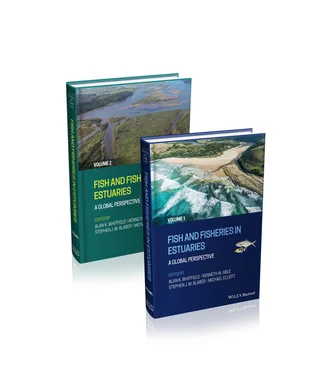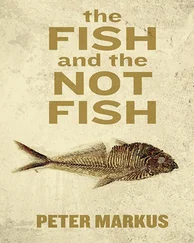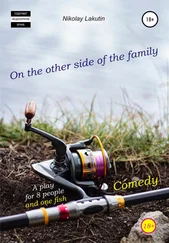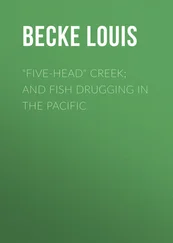55 Whitfield, A.K. 2020. Fish species in estuaries – from partial association to complete dependency. Journal of Fish Biology 97, 1262–1264.
56 Whitfield, A.K., Able, K.W., Blaber, S.J.M., et al. 2022a. Chapter 2. Fish assemblages and functional groups. In: Fish and Fisheries in Estuaries: A Global Perspective (ed., Whitfield, A.K., Able, K.W., Blaber, S.J.M. & Elliott, M. ), pp. 16–59. Wiley Blackwell, Oxford, UK.
57 Whitfield, A.K., Able, K.W., Blaber, S.J.M., et al. 2022b. Chapter 5. Feeding ecology and trophic dynamics. In: Fish and Fisheries in Estuaries: A Global Perspective (ed., Whitfield, A.K., Able, K.W., Blaber, S.J.M. & Elliott, M. ), pp. 255–331. Wiley Blackwell, Oxford, UK.
58 Whitfield, A.K. & Elliott, M. 2002. Fishes as indicators of environmental and ecological changes within estuaries: a review of progress and some suggestions for the future. Journal of Fish Biology 61 (Supplement A), 229–250.
59 Whitfield, A.K., Elliott, M., Basset, A., et al. 2012. Paradigms in estuarine ecology – a review of the Remane diagram with a suggested revised model for estuaries. Estuarine, Coastal and Shelf Science 97, 78–90.
60 Whitfield, A.K., Weerts, S.P. & Weyl, O.L.F. 2017. A review of the influence of biogeography, riverine linkages, and marine connectivity on fish assemblages in evolving lagoons and lakes of coastal southern Africa. Ecology and Evolution 7, 7382–7398.
61 Wolanski, E., Day, J.W., Elliott, M., et al., ed. 2019. Coasts and Estuaries: The Future. Elsevier, Amsterdam.
Chapter 2 Fish Assemblages and Functional Groups
Alan K. Whitfield, Kenneth W. Able, Stephen J.M. Blaber, Michael Elliott, Anita Franco, Trevor D. Harrison, Ian C. Potter, and James R. Tweedley
Chapter 1(Whitfield et al. 2022) introduced the broad nature of the estuarine environment, the great variety of typologies and habitats, the highly variable physico‐chemical conditions which the biota living in these systems have to tolerate, and the rich and diverse foraging opportunities that estuaries provide for fishes. This chapter examines how zoogeography and estuarine typology in particular can influence fish assemblages, as well as focussing on a global classification of estuary‐associated fish species that places them into functional groups and guilds according to the ways in which they utilise these systems and their feeding and reproductive strategies. One of the main benefits of such an approach is that it facilitates ecological comparisons on a regional, continental and global scale.
Fishes inhabiting estuaries have been studied worldwide and there have been several attempts to define the common features of those assemblages (e.g. Yáñez‐Arancibia et al. 1988, Whitfield 1990, Blaber 1991, Potter & Hyndes 1999). In addition to supporting their own resident fish community, estuaries provide nursery grounds, migration routes and refuge areas for a variety of fish species (e.g. Yáñez‐Arancibia et al. 1980, Whitfield 2019). Given the increasing wealth of data, it is possible to determine the ways in which fish communities are similar and differ among biogeographical areas and are thus able to elucidate the features of estuarine fish community structure on a global scale (Potter et al. 1990, Blaber 2000, Elliott & Hemingway 2002, Whitfield 2005, Able & Fahay 2010, Tweedley et al. 2016). The role of salinity as a driver of fish composition is also dealt with in some detail.
2.2 Zoogeography, salinity and estuarine fish assemblages
The number of fish species in tropical estuaries is usually much greater than in temperate regions, probably linked to the greater fish species richness in tropical versus temperate systems (Rohde 1992). In addition, large systems with wide mouths tend to have more species than smaller estuaries, possibly due to their possessing deeper open water channels and a greater diversity of habitats (Horn & Allen 1976, Blaber 2000, Whitfield 2019). Most large subtropical and tropical estuarine areas have at least 100 species, with some reaching over 200 (Blaber 2000). Large cool temperate estuaries may have about 20–50 species (Elliott & Dewailly 1995, Pihl et al. 2002, Waugh et al. 2019) and warm temperate systems about 40–80 species (Potter & Hyndes 1999, Maree et al. 2000). Although latitude and mouth dimensions are important drivers of fish biodiversity in estuaries, water surface area is dominant in this regard (Pasquaud et al. 2015).
The number of species is usually much greater in neritic marine areas than in adjacent estuaries (Whitfield 1980a), with the differences mainly due to the presence of specific habitats, such as coral reefs or rocky algal reefs, in the sea but not the estuary. However, where such habitats occur within estuaries, such as the rocky reef in the lower reaches of the Kosi Estuary in South Africa, or the seagrass beds in the Embley Estuary in Australia, they are often inhabited by species found in those same habitats in the sea (Blaber 2000). In addition, the occurrence of stenohaline marine species within estuaries is severely restricted by the fluctuating salinities that are usually found in these systems (Harrison 2004, Aguilar‐Medrano et al. 2019).
A major factor that influences the occurrence and diversity of fishes in estuaries is zoogeography (Harrison & Whitfield 2008). In estuaries globally, fishes of marine origin tend to dominate the ichthyofauna, with more than half of both the number of species and number of individuals being either fully estuarine species (ES) or species of marine origin (MEO and MED) (Potter et al. 2015a). However, there will always be exceptions to the rule. Estuarine systems with a proportionally high river flow and oligohaline salinities often have a dominance of freshwater (FW) and/or diadromous (i.e. catadromous, CA and anadromous, AN), as well as amphidromous species, e.g. some tropical and subtropical estuaries in South America (Garcia et al. 2003, de Moura et al. 2012) or temperate estuaries in New Zealand (McDowall 1976, Jellyman et al. 1997).
The balance between the guilds has also been shown to change with increasing river flow, e.g. the proportion of marine species in the Great Fish Estuary (South Africa) declined, and that of freshwater and catadromous species rose with increasing river flow (Ter Morshuizen et al. 1996). Changes in fish assemblage composition are also evident during periods of drought (Martinho et al. 2007, 2010) and the increasing prevalence of climate change scenarios (Hallett et al. 2018). Similarly, physical alterations in the ecohydrology of estuaries can alter the guild composition of fish species within such systems, e.g. the addition of a second entrance channel in the Peel‐Harvey Estuary (Australia) increased marine connectivity and salinities, with a concomitant increase in marine taxa within this system (Potter et al. 2016). Fortunately, the advent of ecoengineering has meant that previously degraded estuaries can be partially or completely restored in terms of ecohydrology and therefore provide suitable habitat for more diverse and abundant fish guilds (Elliott et al. 2016).
In terms of the dominant taxa in tropical and subtropical estuaries throughout the world there are broad similarities, but also some interesting contrasts. On the African continent, similar families are recorded in both East and West African estuaries, but the species present are very different. Whitfield (2005) attributed the above pattern to free mixing of tropical fish species across the warm northern and southern extremities of the continent during the late Mesozoic and early Cenozoic, a process that ceased with the closure of the Tethyan Gateway in the north and the development of the cold Benguela upwelling system in the south. This allowed the ‘geminate’ species on the eastern and western coasts of Africa to develop into the current taxa present in the estuarine fish assemblages of these two regions.
Читать дальше












